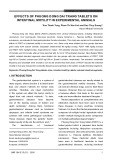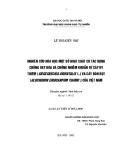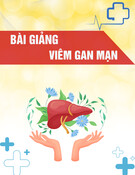
87
JOURNAL OF MEDICAL RESEARCH
JMR 184 E15 (11) - 2024
Corresponding author: Dau Thuy Duong
Hanoi Medical University
Email: dauthuyduong@hmu.edu.vn
Received: 01/08/2024
Accepted: 20/08/2024
I. INTRODUCTION
PROTECTIVE AND CURATIVE EFFECTS OF PHUONG DONG
DAI TRANG TABLETS ON AN EXPERIMENTAL MODEL OF
IRRITABLE BOWEL SYNDROME
Tran Thanh Tung, Pham Thi Van Anh and Dau Thuy Duong
Hanoi Medical University
Phuong Dong Dai Trang tablet is a mixture of medicinal herbs including Hedychium coronarium, Coix lacryma-
jobi, Dioscorea persimilis, Cynara Scolymus L., Paeonia lactiflora, and Glochidion eriocarpum. This study was
carried out to evaluate the protective and curative effects of Phuong Dong Dai Trang tablets on mustard oil-
induced irritable bowel syndrome model in mice. Swiss mice were divided into six groups that were given orally
0.9% sodium chloride (group 1 - 3), Duspatalin (mebeverine) 80 mg/kg b.w./day (group 4), Phuong Dong Dai Trang
tablets 1080 mg/kg b.w./day (group 5) and Phuong Dong Dai Trang tablets 3240 mg/kg/b.w./day (group 6). Mice
of group 3 - 6 were induced diarrhea-predominant irritable bowel syndrome by mustard oil colonic administration
before or after oral treatment. The research indices included the intestinal motility measured by charcoal meal test,
colon macroscopic and microscopic scores. Our findings showed that Phuong Dong Dai Trang tablets at 3240
mg/kg b.w./day reduced the intestinal motility and the stool score significantly in mice. Phuong Dong Dai Trang
tablets at 1080 mg/kg b.w./day improved the stool score and tended to decrease the intestinal motility in mice.
Keywords: Phuong Dong Dai Trang tablets, mice, mustard oil, diarrhea-predominant irritable bowel
syndrome.
Irritable bowel syndrome (IBS) was defined
as functional gastrointestinal disorders with
recurrent abdominal pain associated with
defecation or changes in bowel habits.
Functional gastrointestinal disorders recur
repeatedly without finding any structural
damage or biochemical disorders.1,2 IBS is a
chronic disease which is not life-threatening,
but significantly affects the patient’s quality of
life and requires expensive treatment costs.2
IBS is one of the most common
gastrointestinal disorders worldwide. Its
prevalence varies significantly from country to
country. The overall prevalence of IBS in the
world is 9.2% (according to Rome III criteria)
and 3.8% (according to Rome IV criteria).2 The
prevalence of IBS is common in people under
50 years old, mostly in people at the age of 20
- 30 years old and 1.6 times higher in women
than in men. It has been also demonstrated that
diarrhea-predominant irritable bowel syndrome
(IBS-D) is the most common subtype of IBS.2
The incidence of IBS has increased rapidly in
Asian countries. Although there have been
few studies on the epidemiology of IBS in the
Vietnamese population, there have been an
increasing number of case series on IBS in
Vietnam recently.3
IBS treatment requires a combination of
pharmacological and non-pharmacological























